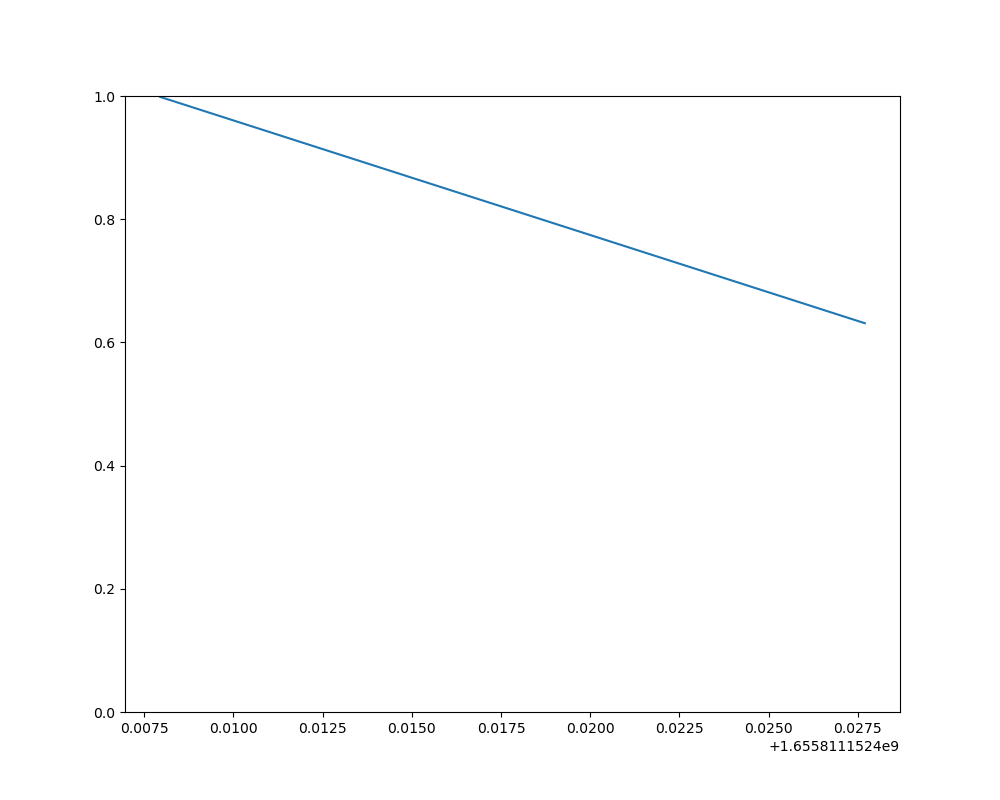我想以一种快速更新的方式实时绘制.
我拥有的数据:
- 通过串行端口以62.5 Hz的频率到达
- 数据对应32个传感器(因此绘制32条线与时间).
- 32点*62.5Hz=2000点/秒
我当前的绘图循环存在的问题是,它的运行速度低于62.5[赫兹],这意味着从串行端口输入I miss some data.
我正在寻找此问题的任何解决方案,以便:
- 要保存来自串行端口的所有数据.
- 绘制数据(甚至跳过几个点/使用平均值/删除旧点,只保留最近的点)
这是我的代码,我使用随机数据来模拟串口数据.
import numpy as np
import time
import matplotlib.pyplot as plt
#extra plot debugging
hz_ = [] #list of speed
time_=[] #list for time vs Hz plot
#store all data generated
store_data = np.zeros((1, 33))
#only data to plot
to_plot = np.zeros((1, 33))
#color each line
colours = [f"C{i}" for i in range (1,33)]
fig,ax = plt.subplots(1,1, figsize=(10,8))
ax.set_xlabel('time(s)')
ax.set_ylabel('y')
ax.set_ylim([0, 300])
ax.set_xlim([0, 200])
start_time = time.time()
for i in range (100):
loop_time = time.time()
#make data with col0=time and col[1:11] = y values
data = np.random.randint(1,255,(1,32)).astype(float) #simulated data, usually comes in at 62.5 [Hz]
data = np.insert(data, 0, time.time()-start_time).reshape(1,33) #adding time for first column
store_data = np.append(store_data, data , axis=0)
to_plot = store_data[-100:,]
for i in range(1, to_plot.shape[1]):
ax.plot(to_plot[:,0], to_plot[:,i],c = colours[i-1], marker=(5, 2), linewidth=0, label=i)
#ax.lines = ax.lines[-33:] #This soluition speeds it up, to clear old code.
fig.canvas.draw()
fig.canvas.flush_events()
Hz = 1/(time.time()-loop_time)
#for time vs Hz plot
hz_.append(Hz)
time_.append( time.time()-start_time)
print(1/(time.time()-loop_time), "Hz - frequncy program loops at")
#extra fig showing how speed drops off vs time
fig,ax = plt.subplots(1,1, figsize=(10,8))
fig.suptitle('Decreasingn Speed vs Time', fontsize=20)
ax.set_xlabel('time(s)')
ax.set_ylabel('Hz')
ax.plot(time_, hz_)
fig.show()
我在使用
ax.lines = ax.lines[-33:]
to remove older points, and this speed up the plotting, but still slower than the speed i aquire data.

任何确保我收集所有数据并绘制一般趋势线(即使不是所有点)的库/解决方案都可以.也许是一些并行采集数据和绘图的东西?

